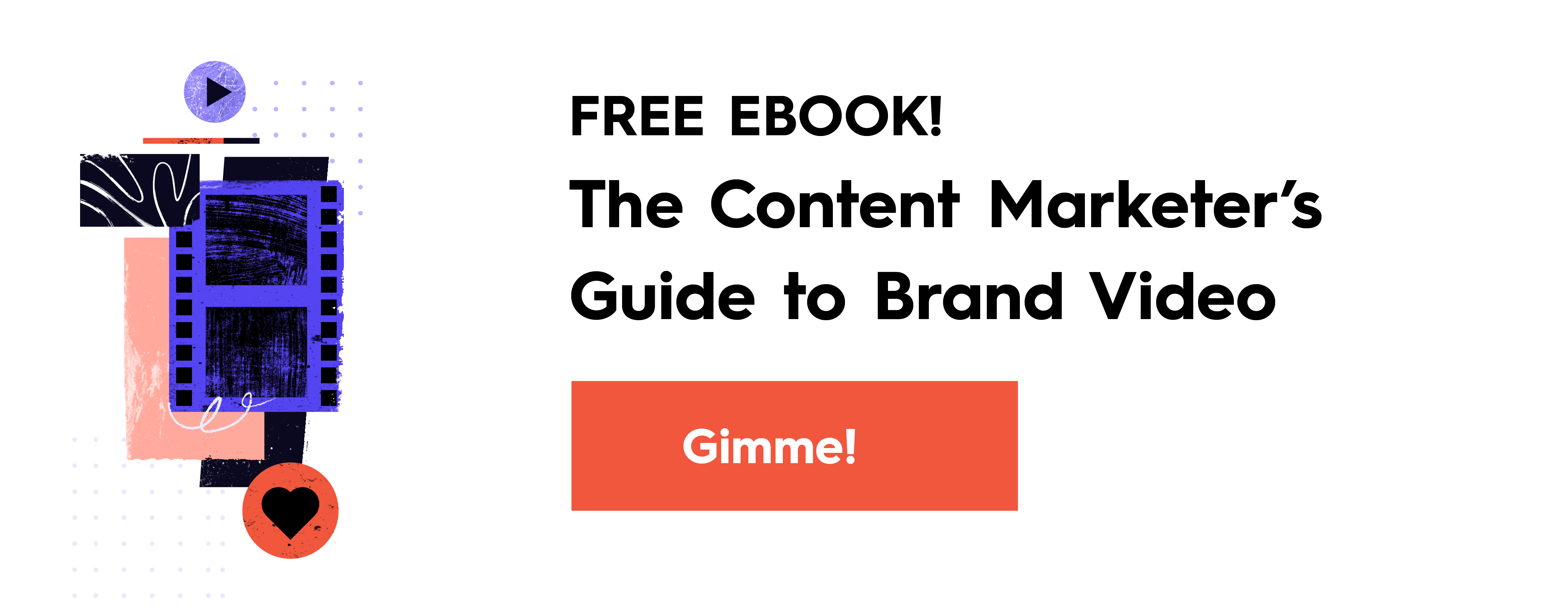We’ve talked at length about the power of data storytelling. When you want to deliver a compelling, unique, and credible message, communicating with data is the way to go. (It’s even better when it’s with your own internal data.) But when it comes to data storytelling, there are many ways to present it—infographics, interactives, video, and more. While each has its own benefit (find out more about how to tell which is right for your story), the combination of data and motion graphics is gold.
Why You Should Tell Data Stories in Your Marketing
When we talk about data storytelling and motion graphics, we’re talking about both message and medium. The data is the story. The motion graphic is how you present the story. Depending on your goal, the blend of both can help you tell a stronger story—in a format people want to consume.
Most of the content marketers we talk to are struggling to create original, compelling content; 72% say it’s their number one priority, according to the Content Marketing Institute’s 2016 B2B Content Marketing Trends report. One of the most common barriers to making successful content is not understanding what people are interested in. But no matter the subject, field, or industry, data stories are always interesting. They reflect and interpret the world around us to reinforce what we see or reveal what we don’t. And when you spin those into interesting narratives, you deliver high-quality, high-value content.
Sure, there are other types of storytelling that can do some of these things, but data storytelling has a few additional benefits that are particularly important right now:
- Credibility: In the current media landscape, people want facts more than conjecture, data over opinion. If you can provide this effectively and consistently in your content, they will trust you more and want to build a relationship with you.
- Meaning: Everyone is busy. They need information interpreted and distilled so that they can get the facts and move on. Data storytelling lets you turn the interesting stuff extracted from data into bigger-picture stories and insights that people can understand and apply to their own lives.
- Comprehension: The data insights delivered are reinforced and, even better, enhanced through data visualization. You might know that sales tripled, but actually seeing the chart grow makes a stronger and more memorable impact.
Speaking of data visualization, we actually created a motion graphic to explain exactly why data visualization is so effective:
When you seek out your own stories, ideally with your own internal data, you can craft interesting, unique, and newsworthy stories that will help you expand your reach and connect with the most people.
While people gravitate toward unique and original stories, they also want them delivered in the formats they crave. Video has become more popular than ever; according to a 2014 Levels Beyond survey, 40% of consumers said they would rather watch a brand video than read the same information.
But why choose motion graphics specifically to present your story? Motion graphics are a great format to bring that data story to life, letting you deliver the information in an impactful format that is easy to share and easy to absorb. They’re particularly helpful to communicate:
- Data insights: Sharing data is one thing. Visualizing data is another. Motion graphics give you an opportunity to depict dynamic visualizations that represent and reinforce the information.
- Abstract concepts: Sometimes the insights extracted from data stories can get a little high minded or abstract. Using graphics to illustrate a particular idea helps connect and cement ideas in the the viewer’s brain. This also gives you a chance to show off creativity. Since motion graphics don’t rely on actors or live-action production, you can storyboard to your heart’s content.
- Emotional stories: Sometimes it’s hard to inject emotion and humanity into a data story. (After all, there is so much data.) But a motion graphic narrative can tap into the viewer’s emotional experience, helping foster a more human connection.
Example: In this motion graphic for USAID, we combined data and narrative to illustrate the issues pregnant women in the poorest parts of the world face.
Best of all, viewers love motion graphics because watching video is an inherently passive experience that requires little energy. The viewer simply clicks play and relaxes. That means a motion graphic effectively spoon feeds information to the viewer. For brands, this is ideal. You have an invested, captive audience that is eager to absorb information—and likely share it
Whether shared on YouTube, your website, or social, compelling motion graphics are a great way to increase your reach—or tease another piece of content. (To make sure your motion graphic is interesting enough to share, find out more about the psychology behind why people share.)
Example: We created a motion graphic teaser for the Deloitte Digital Democracy Survey, calling out some of the survey highlights and directing viewers to download the full survey.
BTW, it’s not only viewers who want this content; publishers are also interested in republishing or using motion graphics to enhance their editorial mix. (You can also get more mileage from motion graphics by adding them to blog posts or landing pages.)
Applications for Data Stories + Motion Graphics
There are plenty of opportunities to apply data storytelling both within your organization and in your content marketing. Any time you need to communicate something quickly and efficiently, motion graphics can help. (Another benefit; they can help communicate in environments where you can’t rely on sound, such as a busy tradeshow floor.) A few of the more common uses:
- Traditional ads
- Promo videos
- Case studies
- Explainer videos
- Culture marketing videos
- Social videos
- Sales collateral
- Presentations
Example: We collaborated with NBC Universal to create a motion graphic encouraging Americans to reduce food waste, using data from the Natural Resources Defense Council.
How to Tell Data Stories in Motion Graphics
There are many steps that go into making a great motion graphic, and you need a solid creative team to help you make it happen. If you want to pursue data storytelling in motion graphics, here’s how to get started:
- Find your data: Internal is the best for the most original stories, but external data will do if you can’t easily get your hands on other stuff. Here are 9 places to look for your own data, as well as 100+ places to get external data.
- Find the story in your data: Follow our step-by-step guide to extract the most interesting stories. (Don’t worry, it’s easy enough a data noob can do it.)
- Follow best practices at every production stage: Check out our 4-step overview of the motion graphics process, figure out how long it should be, then take a look at our team’s best tips to make sure everything goes smoothly at every stage.
If you think you could use a little outside help, take a look at our tips to find the right video agency—or holler at us.




